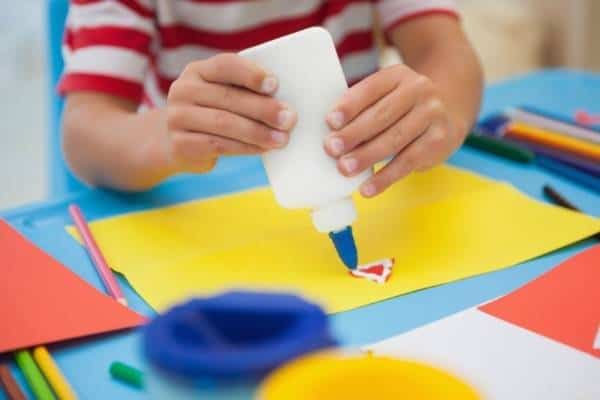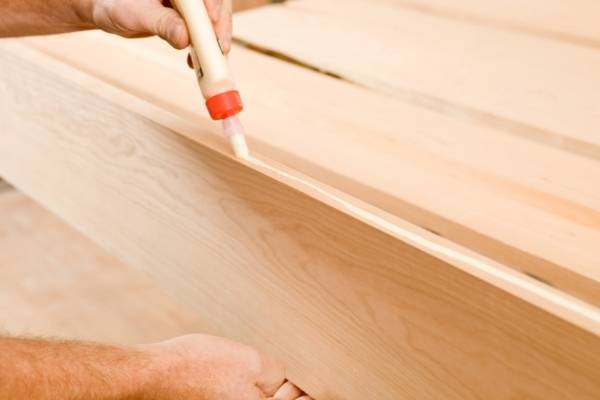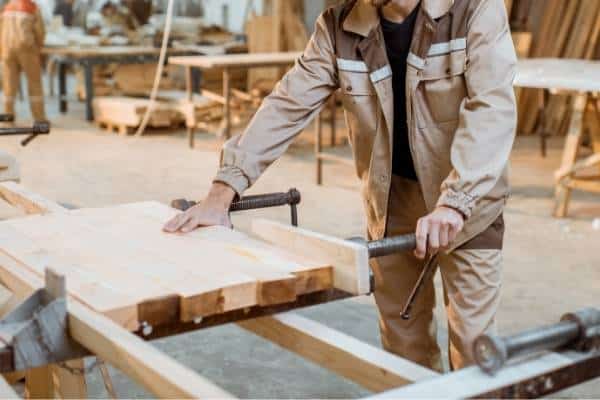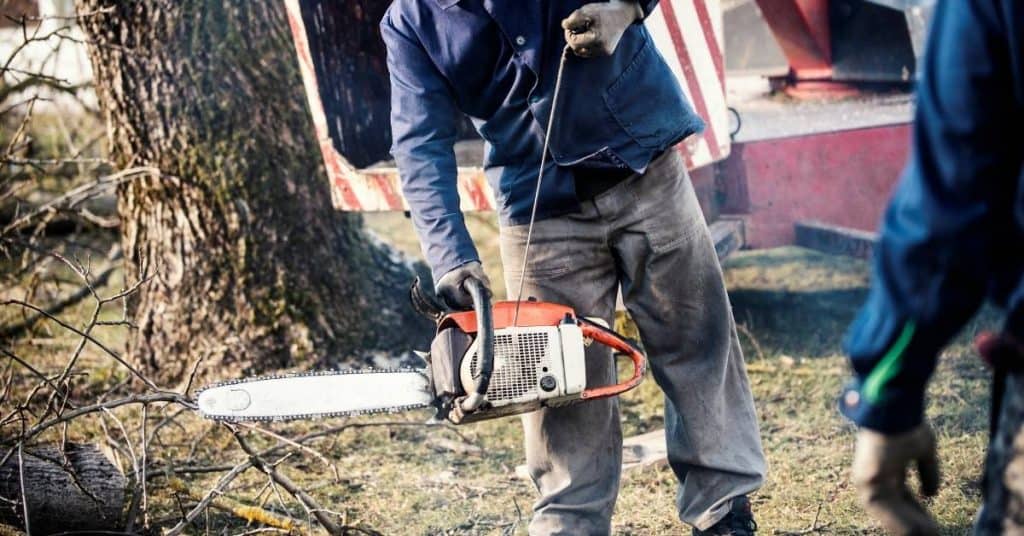PVA glue is an adhesive often used with crafts, woodworking, and anywhere else you may need adhesive. PVA (polyvinyl acetate) can be used on wood, paper, cloth, and other porous materials. PVA glue is commonly used as an alternative to animal glues since it’s free from animal proteins and water-soluble.
This article will cover: what PVA glue is, how it’s used, the steps of using PVA glue for your projects, the advantages/disadvantages of using PVA glue, and tips on removing PVA from your hands, tools, or clothes after use.
What is PVA Glue
PVA glue is one of the most versatile glues available on the market today. PVA or Polyvinyl Acetate is most commonly referred to as wood glue, white glue, carpenter’s glue, or school glue. You had probably used it before and had no idea it was called PVA glue.

PVA is a water-based glue. Some PVA glues go on white and dry clear; different types produce different finishes in their texture. The type you use will depend on the finished look you get, whether rustic or professional.
Like most other wood glues, PVA glue contains a bonding agent that is activated by water and polymerizes the solution to form a strong bond for your project. You can use PVA glue on most porous materials.
When to Use PVA Glue
You can use PVA glue anytime you need a strong bond between materials. There are different types of PVA glue for different applications, and they will give you different results. Some common uses of PVA glue are:
- For Wood Working
- Paper adhesive
- Fabric and Leather Adhesive
- For Bookbinding
- For Arts and Crafts
- Envelope Adhesive
- Wallpaper Glue
- Drywall Primer
- Paper Mache Crafts
- Plaster
- As a Filler
Some people mix PVA glue with other compounds and use it for certain crafts like ceramics or add sawdust to it for use as a filler. You would want to do this because the adhesive properties are better than what they were before, so your project will have a stronger bond when using them together.
How to Use PVA Glue
Things to Consider before using PVA glue:
PVA glue may not hold up on a structure exposed to water or rain, making this option less desirable for outdoor projects like bird feeders and fences. PVA Glue is great as an indoor all-purpose adhesive, especially when working on wood or other porous materials like cardboard, paper mache, and plaster.
PVA Glue also works well as a sealant because of its ability to form a clear film over surfaces without yellowing or cracking over time. You can even paint right over your project after sealing with PVA glue. PVA Glue is also great for fixing a broken vase, glasses, or other fragile items because of the slower drying time.
Steps to using PVA glue:
- Clean Surfaces that will be glued together
- Apply a thin layer of the glue on each side
- Rub two sides together to get air bubbles out
- Use a clamp to hold pieces together if possible
- Allow the glue to cure
- Sand off excess glue once it is dried
- Paint if needed
Types of PVA Glue
PVA glue is considered a great all-purpose adhesive, but there are still different types of PVA glue to choose from depending on the application and results you want.

There are three main types of PVA glue, white PVA glue, aliphatic PVA glue, and cross-linking PVA glue.
What are the different types and how do they differ from one another?
The first type is called “white” or “clear” PVA glue. This type has a silky consistency and dries clear. It remains pretty flexible when it is dry and will not become brittle or turn yellow. This is popular for most hobby projects, crafting, and bookbinding.
The second type is an aliphatic PVA glue called “yellow” PVA glue or wood glue. It has a thicker consistency than white PVA glue and also dries hard and sands easily. It forms a strong bond with porous surfaces like wood. The excess adhesive needs to be wiped off before drying, and pieces are usually clamped together to prevent movement and ensure a strong bond is made. These glues are most commonly used for woodworking.
The third type is cross-linking PVA glue. Cross-linking refers to the cross-links from one polymer chain to another, and these links promote a change in the polymers’ properties. In this case, it is PVA glue that is slightly more water-resistant than the other types. Some cross-linking PVA glues even have heat resistance.
Advantages
The main advantages to using PVA glue are that it is water-based, inexpensive, and works well on porous surfaces like wood, yet can also be used for fragile items like ceramic vases.
PVA glue is also non-toxic, so it does not have any strong odors, so white PVA glue is widely used in schools. Most types of PVA glue are also easy to clean up since they are water-based, no strong chemicals are needed.
PVA wood glue dries hard so you can easily sand and paint it for any project. Most PVA glues also won’t yellow or crack over time.
Disadvantages
The disadvantages of using PVA glue are that you cannot use it outside because it doesn’t hold up in extreme weather conditions. However, some types are slightly water-resistant.
Drying time can take some time. Some items will need to be clamped or weighed down for at least 30 minutes, while others will need a curing time of up to 24 hours.

PVA glues also have a limited shelf life, some only last up to a year.
Tips on removing PVA Glue from your hands, tools, or clothes
When PVA glue is on your skin, please remove it from your skin using some soap and water. You can also use alcohol. A solvent-based cleaner may also work.
To clean the excess wet glue off clothing, you should immediately rinse off the excess with cold water, then launder as usual. If the glue is dried onto the clothes, scrape off as much as you can. Apply some laundry soap and soak in cold water. Then wash on a cold cycle.
To clean your tools with a white PVA glue soap and warm water should work fine. If you use a stronger PVA glue like wood glue or cross-linking glue, use a solvent-based cleaner to remove excess glue before the glue dries. If glue has dried, try scrapping off as much as you can, then soak in a solvent cleaner.
Alternatives to PVA Glue
1. Rubber Cement
An alternative to PVA glue is rubber cement. Rubber cement is an adhesive that dries clear and does not need to be mixed before use. Rubber cement does need to be double coated for a stronger bond; it can also be tinted with paint, ink, or dyes before applying it to the surface for coloring purposes.
2. Contact Cement
The use of contact cement is another alternative besides PVA glue which can be bought at any hardware store and can work on porous surfaces such as wood and cardboard; however, it is not preferred. Contact cement has similar properties to PVA glue, but you have to apply two coats of glue so that the glue forms a strong bond with wood and does not fall off. It is ideal for smaller jobs such as repairing glasses and small items.
3. Carpenter’s Glue
Carpenter’s glue is similar to PVA glue but dries harder and stronger than PVA glue. It also comes in different types, with some that are designed to be water-resistant or extra strong.
FAQs About PVA Glue
1. Is PVA glue the same as Elmer’s glue?
Elmer’s glue is a type of PVA glue often used in schools and homes for crafting projects. Most PVA glue isn’t affected by sunlight, but Elmer’s glue will turn yellow if left exposed to light for too long.
2. Where to buy PVA glue?
You can buy PVA glue at hardware stores or online in bulk sizes if you plan on using it for multiple projects.
3. How do you prevent PVA glue from yellowing?
White PVA glues, like school glue, can sometimes discolor over time and turn yellowish as they age if exposed to bright light. This is mainly caused by impurities present in the glue or the reaction with oxygen in the air. You can, however, prevent your PVA glue from yellowing by storing it in a cool and dark place free of excess moisture and dust so that these impurities cannot accumulate on top and react with the PVA over time.
Conclusion
PVA glue is a type of adhesive that you can use for many different projects. However, most types cannot be used outside or on surfaces subject to heavy water contact since they are water-based. There are three different types of PVA glue: White PVA glue (polyvinyl acetate), Yellow Wood PVA Glue, and Cross-linking PVA glue. Cross-linking PVA glue has slightly different properties that make it more water-resistant.
PVA glues are widely used because they don’t have any strong odors and are easy to clean up in most cases. They are inexpensive and can be found at your common hardware store. There is a type of PVA glue that will be perfect for your project.


